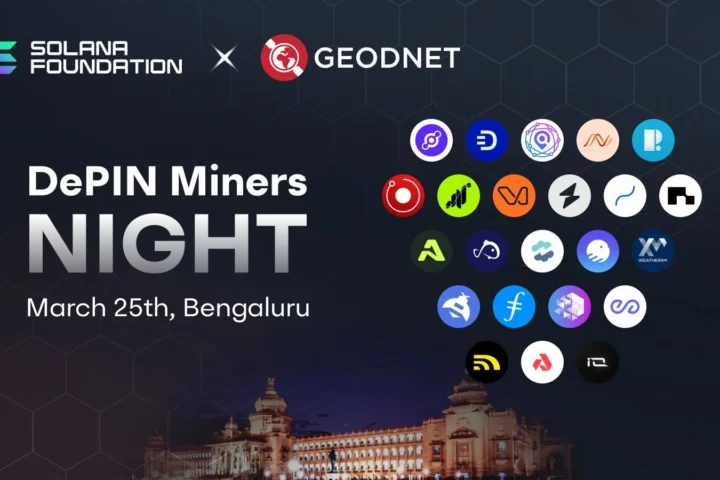In a groundbreaking move, Guggenheim Treasury Services, a subsidiary of Wall Street giant Guggenheim Partners, has issued $20 million of tokenized commercial paper on the Ethereum blockchain; This initiative marks a significant step for Guggenheim Partners as it ventures into the blockchain space, demonstrating its commitment to embracing innovative financial technologies.
Guggenheim partnered with blockchain platform Zeconomy, which facilitated the transaction and highlighted the burgeoning demand for digital assets in the market. Zeconomy CEO Giacinto Cosenza attributed this demand to the recent success of crypto ETFs, indicating a growing appetite for digital assets within the financial world.
Tokenizing Commercial Paper on Ethereum
Guggenheim Treasury Services’ tokenized commercial paper issuance is a significant step in the evolution of traditional finance. The firm chose Ethereum as the blockchain platform for this initiative, leveraging its established infrastructure and robust ecosystem. This move highlights the potential of blockchain technology to transform traditional financial instruments.
The tokenization of commercial paper allows for greater efficiency and transparency in the issuance and trading of these short-term debt securities. By leveraging smart contracts and the immutability of the blockchain, Guggenheim aims to streamline the process, reduce costs, and enhance security. This pioneering move underscores the growing trend of real-world asset (RWA) tokenization, where traditional assets are represented and traded on blockchain platforms.
Partnership with Zeconomy
Guggenheim’s collaboration with Zeconomy, a blockchain platform specializing in tokenization services, played a pivotal role in the successful issuance of the tokenized commercial paper. Zeconomy’s AmpFi.Digital platform, designed for qualified investors, facilitated the process, enabling Guggenheim to leverage blockchain technology for this innovative financial product.
This partnership demonstrates the growing importance of blockchain infrastructure providers in the traditional finance landscape. Zeconomy’s expertise in tokenization and its commitment to secure and reliable solutions were crucial factors in Guggenheim’s decision to collaborate. The partnership underscores the increasing convergence of traditional finance and blockchain technology, as institutions like Guggenheim seek to explore and adopt innovative solutions to enhance their offerings.
Growing Demand for Digital Assets
Guggenheim’s move to tokenize commercial paper on the Ethereum blockchain aligns with the broader trend of growing demand for digital assets within the financial industry. This demand is driven by various factors, including the increasing adoption of cryptocurrencies and the success of crypto ETFs, as highlighted by Zeconomy CEO Giacinto Cosenza. Investors are increasingly seeking exposure to digital assets, driven by their potential for diversification, innovation, and potential for growth.
The tokenization of traditional assets like commercial paper opens up new avenues for investment and liquidity, further fueling the demand for digital assets. This trend is also fueled by the increasing institutional interest in blockchain technology, as demonstrated by the participation of major players like BlackRock and Franklin Templeton in the tokenized US treasury market.
A Milestone for the Real-World Asset (RWA) Market
Guggenheim’s tokenization of commercial paper represents a significant milestone for the real-world asset (RWA) market. This move signifies the increasing interest of traditional financial institutions in leveraging blockchain technology to tokenize traditional assets. The success of this initiative could pave the way for other institutions to follow suit, expanding the scope of RWA tokenization and driving further innovation in the space.
The RWA market is poised for significant growth, with institutions exploring opportunities to tokenize a wide range of assets, including securities, loans, and real estate. This trend has the potential to revolutionize traditional financial markets, offering greater efficiency, transparency, and accessibility to investors.
Implications for the Future of Finance
Guggenheim’s entry into the blockchain space with the tokenization of commercial paper has significant implications for the future of finance. This move signals a shift towards greater adoption of blockchain technology by traditional financial institutions, accelerating the integration of digital assets and decentralized finance (DeFi) into the mainstream financial system.
As more institutions embrace blockchain solutions, we can expect to see a surge in innovation, efficiency, and accessibility within the financial sector. The tokenization of traditional assets like commercial paper could lead to the development of new financial products and services, opening up new avenues for investment and liquidity; This trend has the potential to reshape the financial landscape, creating a more inclusive and interconnected global financial system.











